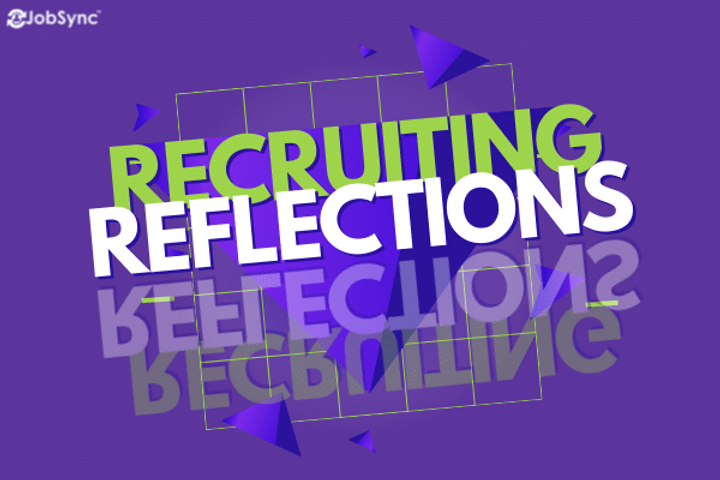
Recruiting Reflections: Too Many Yet, There are None – A Tale of Two Recruiting Worlds
The great resignation yet there are no candidates….how can both of these statements be true?
In the US in September 2021:
There were 128 million full-time working Americans
Unemployment had fallen to 4.8% or 7.7 million people
There were 10.4 million open jobs
The US added 194,000 net new workers to the market
4.4 miilion people left their jobs
Yet, the US has 5 million fewer jobs than it did pre-pandemic. Where are the candidates? Why can’t you find any – or if you are like me, hiring for a remote-only, corporate salaried job, why are there so many candidates?
First, and most importantly, there are two different worlds when it comes to jobs, and we have generally spoken about it as if there is only one. We can’t continue to blend them as they are very different in general, hugely different during a pandemic (even a pandemic that may be winding down).
Group 1: The hourly workforce. The $2.13 an hour minimum wage servers and the $15.00 an hour retail workers (and less in some areas). The nurses, the healthcare support staff, the office workers, and dental assistants. Airline flight attendants and school teachers. Some skilled labor, some not – all with one common thread: required interaction with the American public. Every single complaint about the ‘there are no candidates’ can be traced back to lower-paying, hourly jobs that must interact with the American public. Americans have taken away the dignity that used to come with hard-working service-oriented jobs. Americans berate and abuse, they spit and they hit. From punching flight attendants to mandating that teachers can’t wear masks, Americans, often from the comfort of their cushy office (alone), have pushed service workers to the brink. The problem isn’t that there aren’t workers – the problem is that there aren’t workers for these jobs.
Group 2: The professional workforce. The salaried worker. The office worker. The person who spends more time on Zoom and their keyboard than in front of another person. And it’s not just business to business, it’s consumer jobs too, that can be done from a cubicle or office, home or otherwise. Jobs with weekends free or at least an expected schedule – where you aren’t ‘cut’ halfway through your workday to save the business $8.52 that they might have to pay you for 4 hours. These jobs are getting hundreds of applications. The candidates are out there and they want to work. But those jobs have to provide candidates with a sense of purpose. Employers need to accept them as contributors, not as servants.
Where both groups are converging is in the Great Resignation – candidates are leaving bad jobs, in both groups, in droves – and they should. The days of loyalty are long gone and candidates’ attitudes have shifted. They aren’t grateful for the opportunity to be treated badly, overworked, and underappreciated. They don’t appreciate spending years of their lives and hundreds of thousands of dollars on education to do menial tasks for a near minimum wage that will take a lifetime to pay back school loans.
The question shouldn’t be “Why is this happening?”; the question should be “How do we capitalize on this opportunity?”
The answer is in your process.
Make your jobs interesting. Not just the job descriptions. Give your employees real problems to solve, internally and externally. Don’t make them a cog in the machine, make them an owner of the solution.
Promote independent thinking. It can’t be just a catch-phrase. Independent thinkers are good for your business too. Independent thinking solves problems, makes for happier customers and happier employees. It changes your business’ ability to grow.
Family first. Or human first. Your employees are people. They have children and parents, health issues, and celebrations. The best employees expect companies to respect that they have a whole life – not just a work-life.
Shout your greatness from the rooftops. Future employees only know you are great if you give them ways to know that you’re great. Shout it on your career site, Glassdoor, and in your job descriptions. While some people research, others know the value of application speed. Give both future employees the ability to find out about your business without hurdles.
Speaking of hurdles, remove them. The harder you make it for candidates to apply the less likely the good ones will. But on the other hand, don’t shift the hurdles to your recruiters. That causes delays and has the same net impact: good candidates will drop out of the process. Rather, find solutions that solve for both – candidate experience and recruiter efficiency. [Hint, hint, we have that solution.]
What experience do you have with the reshuffling of employees? Has your organization been affected? Tag us on social media and let us know your thoughts.
Is there a topic in recruiting you’d like to reflect on? Send your thoughts to us, and we’ll feature your content in a Recruiting Reflections blog post.

